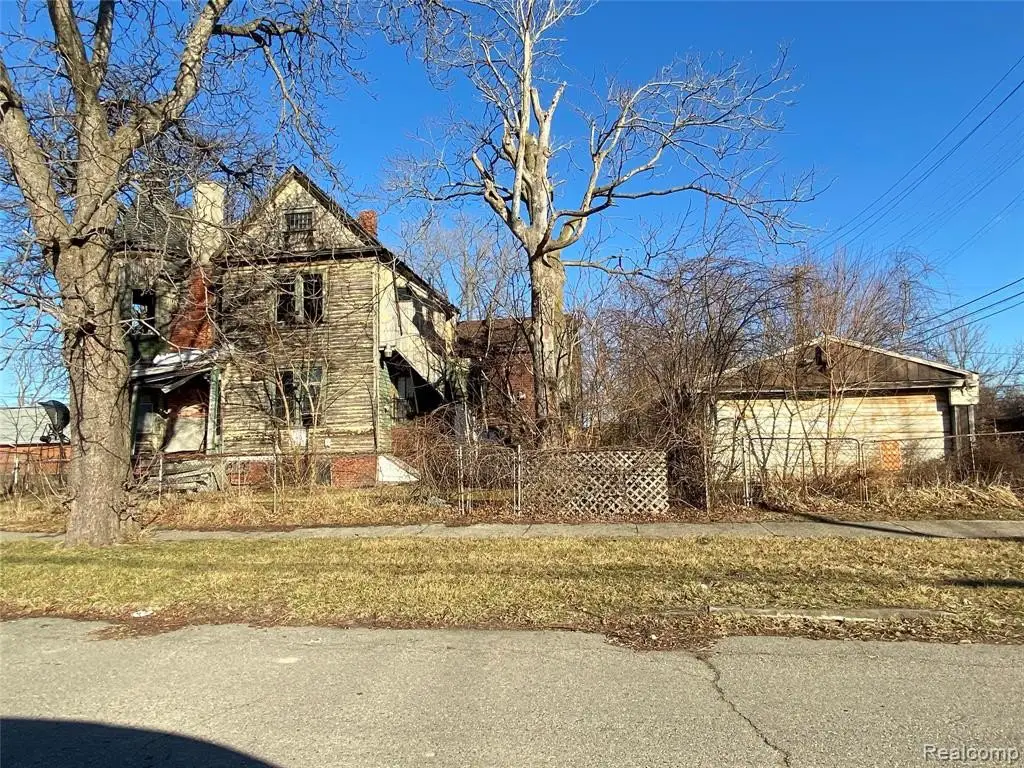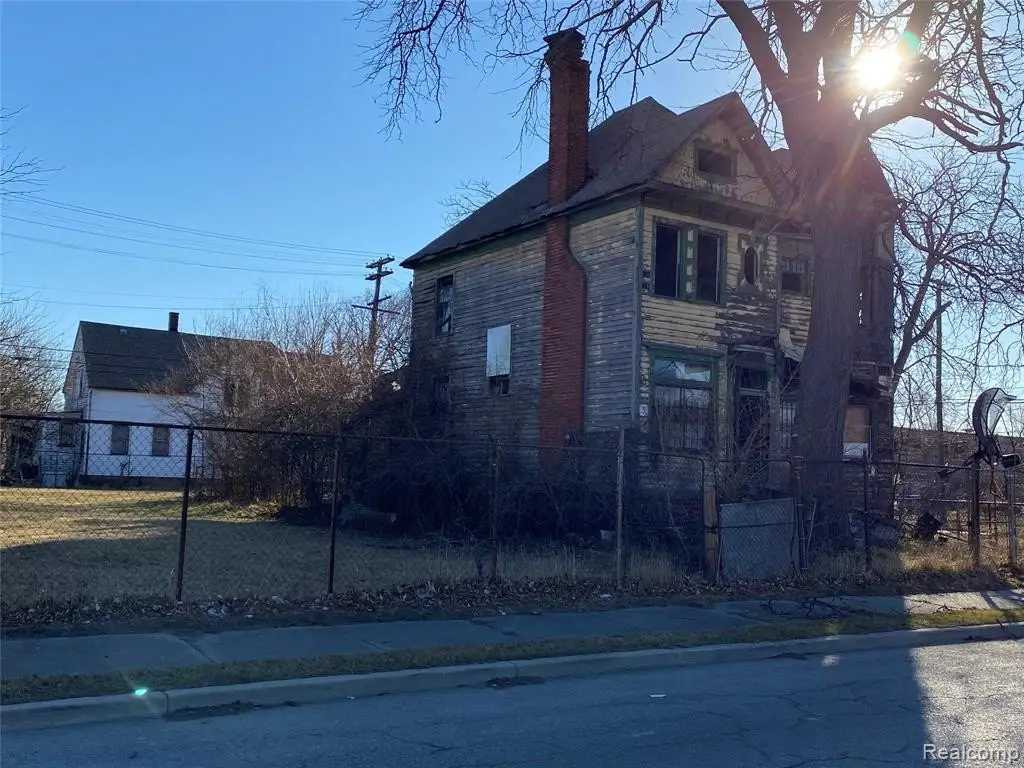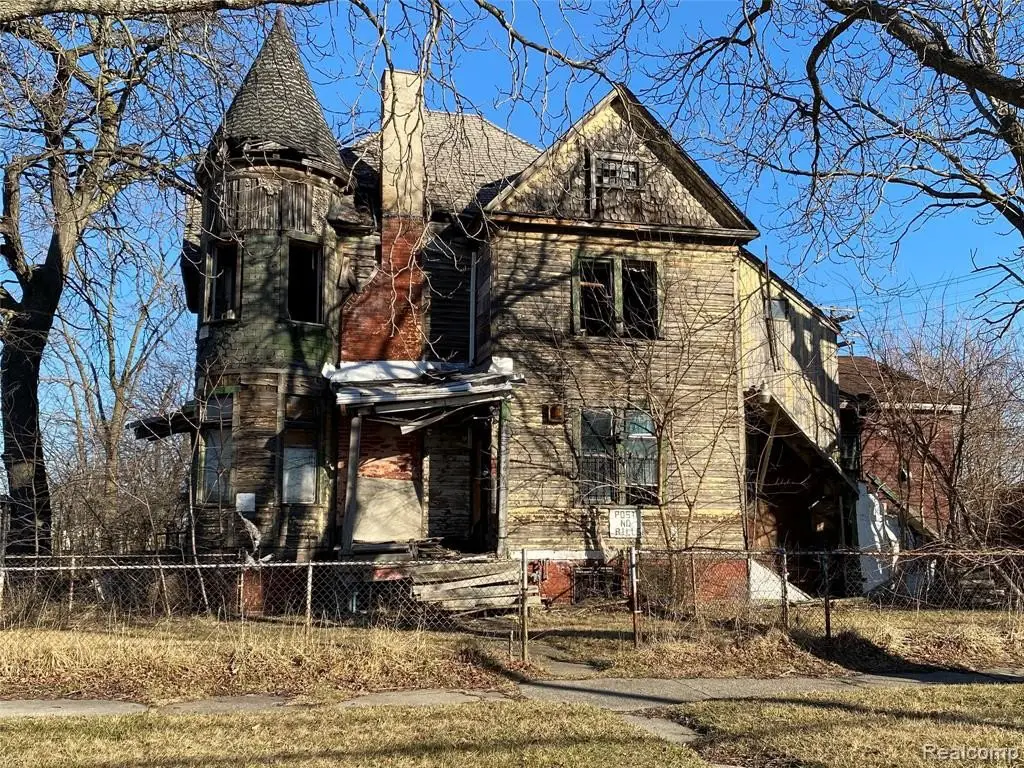This house might be empty now, but it used to be home to a delightful elderly man who lived here from the 1960s all the way until 2014. We’re showcasing this property on OHU50K today, not because we expect someone to rescue the house, but because it’s connected to some intriguing stories, or maybe even a couple of them.
Here are the details:
- 4 bedrooms
- 2 bathrooms
- A generous 2,146 square feet of space
- A 0.23-acre lot
- It was built back in 1890

History:

Now, let’s dive into the history of this abandoned Queen Anne Victorian in Detroit’s East Poletown neighborhood. You might think it looks like a place where ghosts could pop out of the broken windows any moment, but once upon a time, it was the shining star of the block. It was constructed in 1890, adorned with stained glass windows, intricate shingles, and a towering structure that made it stand proudly at the corner of Moran and Garfield for many decades. Interestingly, this house was originally part of the extensive land owned by the Moran family – a farm that, in today’s Detroit, would stretch along the Detroit River for several blocks and extend three miles away from the river.
The family’s history has some fascinating twists. Grandfather Charles Claude Moran, an early settler of Detroit, met a tragic end when he was murdered by his brother-in-law, John Hacker, in 1775. Hacker and two others, one of them a woman, were executed for this crime, leaving Moran’s widow with the farm. After her untimely death, her son Charles Moran inherited the property.
Charles Moran’s story includes his service in the War of 1812 when he enlisted at just fifteen years old. He was under the command of General William Hull when Hull surrendered Detroit to the British. Moran, as a member of the territorial militia, received parole instead of being sent to Canada as a prisoner of war. He continued to defend Detroit and was granted 160 acres as a bounty for his service. However, his efforts to seek compensation for the damage to his Detroit properties caused by American forces were unsuccessful.
He held various positions, including county judge in 1831 and from 1837 to 1841, as well as justice of the peace and alderman. Most of his later years were spent managing the family estate, known as the Moran Farm. Instead of selling off the land, he divided it into city blocks and leased them out, gradually opening streets across the property.
Charles Moran’s life came to an abrupt end, with reports citing “heart disease superinduced by indigestion” as the cause of his passing. At the time of his death, he was the sole heir to the Moran family fortune, which was estimated to be around $4 million – equivalent to nearly $100,000,000 today.

